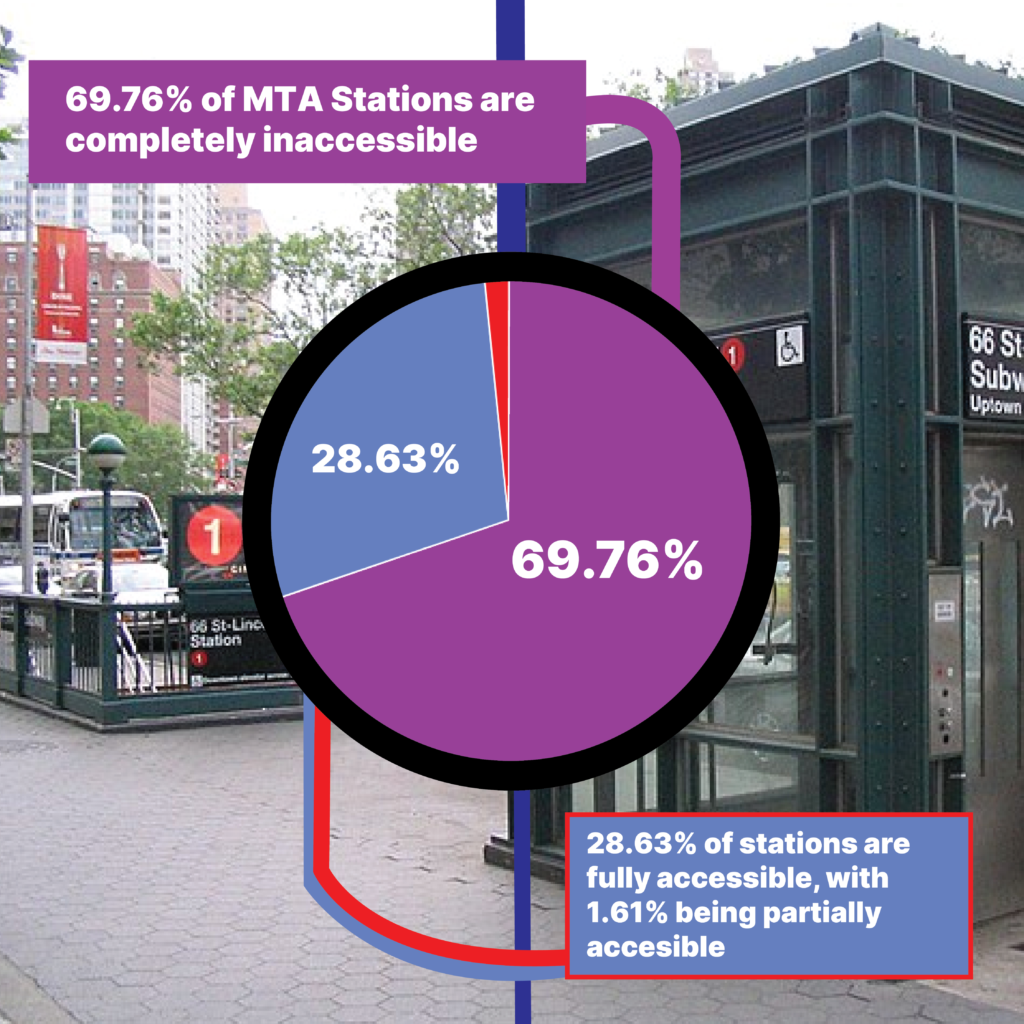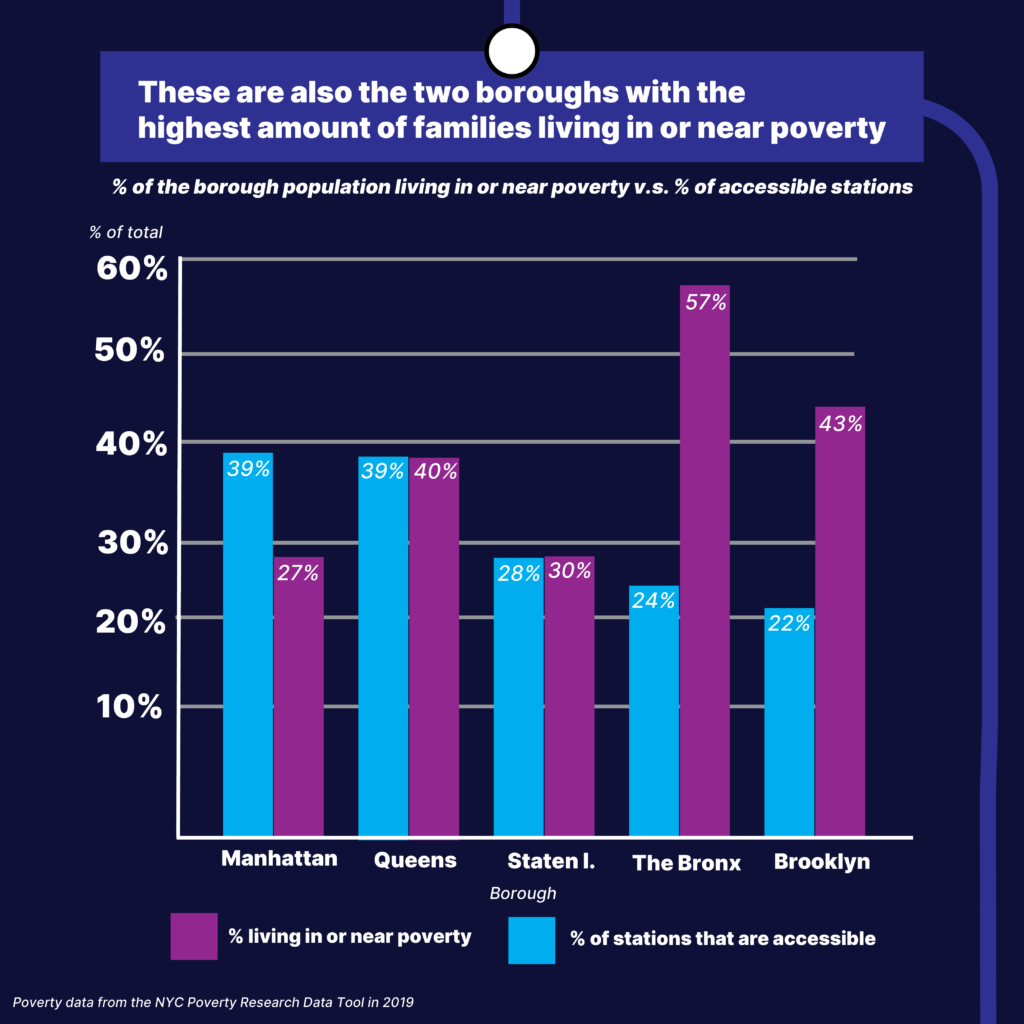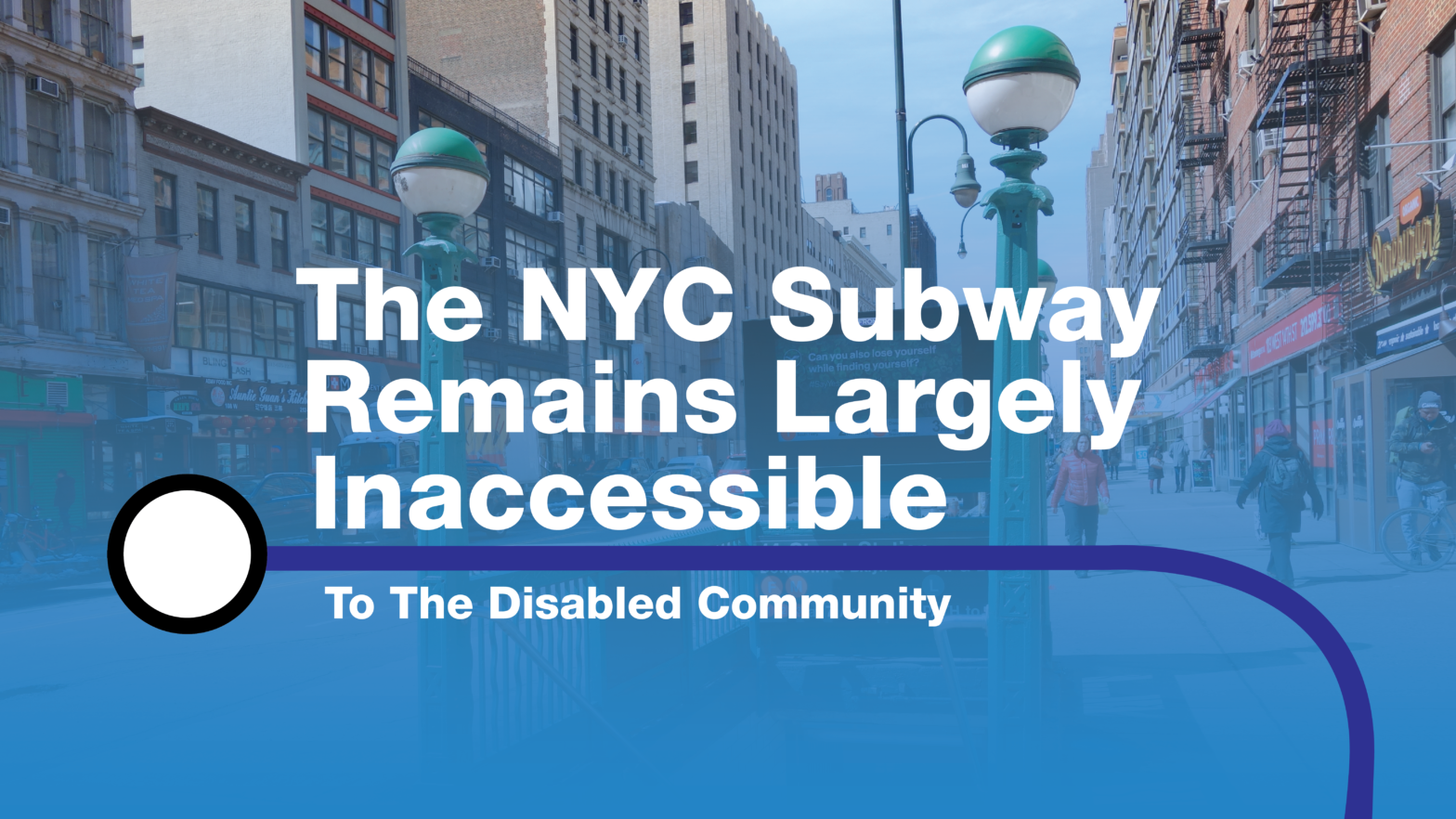The Sixth Avenue subway station near The New School has been undergoing renovations since Feb. 2023 to add elevators that will take riders between the platform and street level.
The renovations on the station, which many TNS students use, won’t be finished until Nov. 2024 and are part of the MTA’s pledge to make 95% of the subway system completely ADA-compliant by 2055. While the new elevators will be beneficial for all riders, subway stations still remain largely inaccessible to disabled New Yorkers.
Despite the fact that 1 in 15 New Yorkers have an ambulatory disability, which is an impairment that prevents or impedes walking, less than 30% of New York subway stations are fully accessible. This means the station has a ramp or elevator to take passengers from platform to street level. Some stations are partially accessible, meaning some platforms are accessible, but not all.

Currently, just under 29% of stations are fully accessible. Just under 2% of stations are “partially accessible.”

The percentage of accessible stations also varies by line and location. Of the G train’s 21 stations, only five are accessible. The A/C/E line has the highest percentage of accessible stations, with just under 50%.
Avery Camp, a disabled BA/MA student at The New School, recently had to adjust their commute to class due to the closure of an elevator at Union Square. “I used to take the N/Q/R to school from my station in midtown, and that elevator is closed. It’s been closed this entire semester,” Camp said.
The elevator on the Union Square N/Q/W/R platform has no projected reopening date. A sign on the door recommends that disabled riders take a downtown train four stops to City Hall where they can transfer to an uptown train and ride back to Union Square to use the working elevator on the opposite platform.
With the Union Square elevator closed, and MTA’s proposed solution inconvenient, Camp prefers to get off at the fully accessible Fourth Street-Washington Square station on the A/C/E line. However, this change has added over 10 blocks of walking to their commute to school, which can be even more exhausting with their disability.
Elevator and escalator outages are a common occurrence throughout the New York subway system. Lio Connelly-Mendez, a second-year at Eugene Lang College of Liberal Arts with a disability, lives near the Clark Street station, a station with three elevators with unpredictable functionality. “They have not all been broken at once yet,” said Connelly-Mendez, “but there’s usually at least one working. They could all decide to break one day.”
“I find that escalators tend to be out of service a lot,” Connelly-Mendez said. “One of the stations near me, High Street, has really steep stairs. It doesn’t have an elevator at all. And the escalator to come up has been down for quite a while, at least since the fall.”
When elevators break down, it can leave disabled riders stranded. After an unscheduled and unreported elevator outage, Camp had to take the stairs, which can cause serious and painful flare-ups with their disability.
“I’ve been stuck in an elevator station, the elevator was supposed to be available and then I’m stuck on this platform. That actually has put me in a flare-up for a week or more,” Camp said.
Camp’s commute should only take around 20 minutes, but due to the unpredictability of elevators, it can take anywhere from 45 minutes to an hour.


Manhattan and Queens are tied for the highest number of accessible stations at just under 40%. In order to ensure an accessible commute to school, Camp moved to Manhattan, despite feeling much more connected to communities in Brooklyn, which has the lowest percentage of accessible stations among the boroughs.
“I live in Midtown. It sucks,” Camp said. “I lived in Brooklyn for a brief period of time before I was disabled, but now I do feel very disconnected.”

Other cities like Chicago have made over 70% of their stations fully accessible, despite the transit system being about as old as New York’s. 100% of Singapore’s transit stations are accessible: a percentage the MTA isn’t even willing to strive for in the next 30 years.

“It’s just a completely unacceptable amount of time,” Camp said. “They’ve had 35 years to make the subway stations accessible and now they’re telling us it’s going to be another 30 years.”
The promise and the distant due date come from a settlement reached after two class action lawsuits were filed against the MTA in 2022, although many more have been filed over the years.
“It’s clear to me that the MTA doesn’t prioritize people with disabilities,” Camp said.
All data visuals and maps by Ash Reynolds.








Leave a Reply